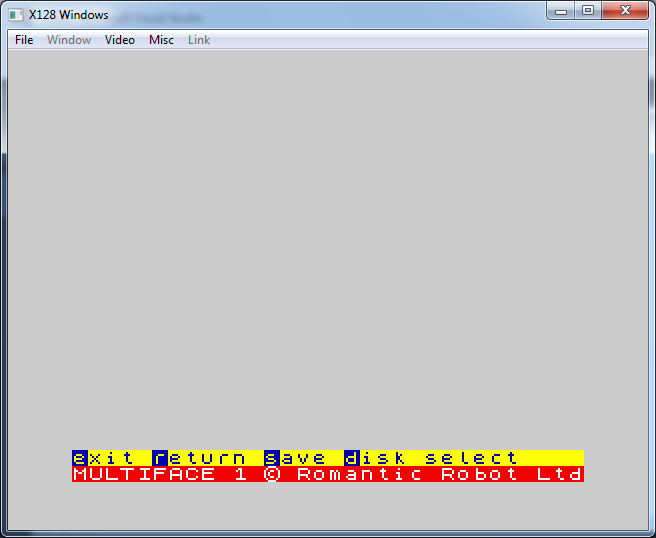
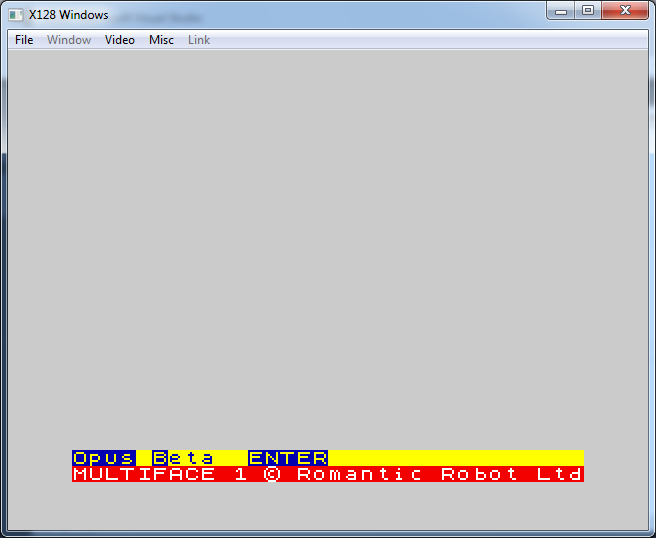
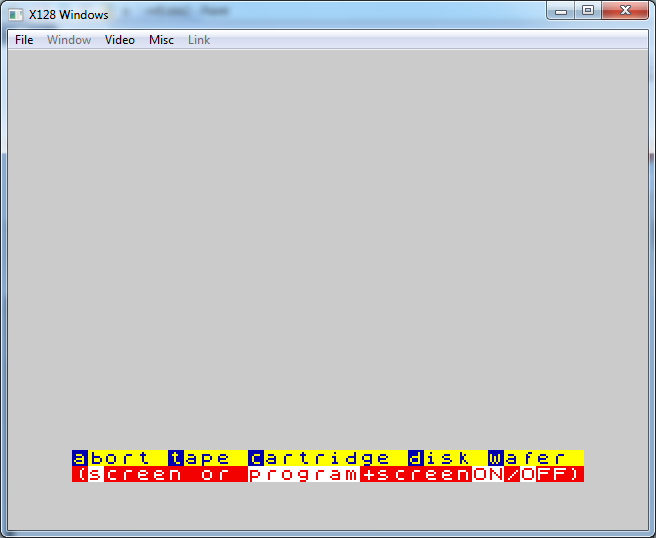
Multiface ROM Collection Project
28/08/2017.
| Multiface | Page In | Page Out | Tape | Microdrive | Opus Discovery | Betadisk 48 | Wafadrive | Kempston Disc | Secret Numbers | CRC32 | PCB | Notes | Date |
| MF1 | 159 (9F) |
95 (5F) |
Y | Y | Y | Y | Y | CB, 00 | C88FBF9F | MU12, Serial number 381R. | VERY early version, composite video, no on/off switch, 2K RAM!, no toolkit, no pokes, "disk select" | 30/07/2017 | |
| MF1 | 159 (9F) |
95 (5F) |
Y | Y | Y | Y | Y | 23, 00 | D4AE6953 | MU 2.0, 1985. | Early version, composite video, no on/off switch, 8K RAM, no toolkit | 05/04/2014 | |
| MF1 | 159 (9F) |
31 (1F) |
Y | Y | Y | Y | Y | FE, 00 | FA1B8B0D | MU 2.0, 1985. Serial number 2296. | Early version, composite video, no on/off switch, 8K RAM, no toolkit | 19/06/2013 | |
| MF1 | 159 (9F) |
31 (1F) |
Y | Y | Y | Y | Y | 90, 00 | 2EAF8E41 | MU 2.0 | Composite video, no on/off switch.* | 13/04/2014 | |
|
MF1 |
159 (9F) |
31 (1F) |
Y | Y | Y | Y | Y | E4, 00 | 4B31A971 | MU 2.1, 1986. | HW Switch, common version | 14/03/2014 | |
| MF1 | 159 (9F) |
31 (1F) |
Y | Y | Y | Y | Y | E7, 00 | 670F0EC2 | MU 2.1 | HW Switch.* |
13/04/2014 |
|
| MF1 | 159 (9F) | 31 (1F) | Y | Y | Y | Y | Y | 67, 00 | D720EC1B | MU 2.1 | HW Switch, Kempston Disc support! | 05/04/2014 | |
| MF1 | 159 (9F) | 31 (1F) | Y | Y | Y | Y | Y | 93, 00 | 8C17113B | Unknown | Brazilian clone | 15/07/2012 |
| Multiface | Page In | Page Out | Tape | Hypertape | Microdrive | Opus Discovery | DISCiPLE +D | Secret Number | CRC32 | PCB | Notes | Date |
| MF128 (87.1) | 159 (9F) | 31 (1F) | Y | Y | Y | Y | 0D | 8D8CFD39 | V34, 1987 | Black writing on label. | 19/06/2013 | |
| MF128 (87.12) | 159 (9F) | 31 (1F) | Y | Y | Y | Y | 0F | CFEFD560 | V35, PR 1987, 120146 | 25/10/2013 | ||
| MF128 (87.2) | 191 (BF) | 63 (3F) | Y | Y | Y | Y | 1D | F473991E | Unknown | So far, only seen in some emulators. | 02/07/2012 | |
| MF128 (87.2) | 191 (BF) | 63 (3F) | Y | Y | Y | Y | 3C | 78EC8CFD | V36 DIS, 1987 | 19/06/2013 |
| Multiface | Page In | Page Out | Tape | +3 | Secret Number | CRC32 | PCB | Notes | Date |
| MF3 (3.C) | 63 (3F) | 191 (BF) | Y | Y | 13 | 2D594640 | V50 MULTP3, 1987. Serial number 232216 | 19/06/2013 | |
| MF3 "Hard Micro" | 63 (3F) | 191 (BF) | Y | Y | 9A | 2CE53095 | Unknown | From the Hard Micro clone seen on hardware.speccy.org - it has no copyright message or version number. | 18/08/2012 |
| Multiprint | Page In | Page Out | Tape | Secret Number | CRC32 | PCB | Notes | Date |
| Multiprint (1987/5) | 187 (BB) | 191 (BF) | Screen Dump | 5A | 3A26E84B | Unknown | 02/07/2012 | |
| Multiprint (1988/01) | 187 (BB) | 191 (BF) | Screen Dump | A8 | A5C58022 | Unknown | 06/11/2013 |
Multiface ID & Dumping utility (06/11/2013). (TAP version)
Multiface ID & Dumping utility
(26/09/2012). (Interface 1 null modem cable version (*.SNP files))
Spxfr (Windows
transfer software for connecting to Interface 1)
30/07/2014.
A significant update! Davide Barlotti has found a *very* early Multiface 1, indeed. With a serial number of "381R", a PCB marking of "MU12", which I take to mean "1.2", and a measly 2K RAM (as listed in the very early adverts). It has no toolkit and no poke option either! Instead it has "disk select" as a different way of choosing which disk interface to save to. When you look at the secret number, you have to get back by pressing break instead of space.
Another interesting thing about it, is that it uses port 95 (0x5F) to page out. This makes it incompatible with all common variants of the MF1.
You may have noticed that I have had a ROM with a CRC of "D4AE6953" in the table for a while, but without any information (I think I got it from Eugenio Ciceri). That's because I couldn't get it to work. Now, I've found that it also uses the same port to page out. It's much more like an early 2.0 ROM, in the sense that it has a poke option, uses 8K of RAM and is believed to have a marking of "2.0" on the PCB. But it uses the older, incompatible paging. I guess it might've been on the borderline between the 1.X series and the 2.0 series. Sadly, I don't know the serial number of that one.
MF1 2K version!
05/04/2014.
Big news! Eugenio Ciceri has dumped the legendary MF1 ROM that supports the Kempston Disc interface!!! (and thanks to Stefano Donati for bringing us together!)
The interface includes an extra "kemp" option on the main menu, which resets the Spectrum with the Kempston Disc interface paged in. I'm not sure why. The manual states that it will allow you to use the Kempston Disc interface with a Spectrum 128K, but I can't see how that would work - the ports clash.
The interface allows you to save to the Kempston Disc (it even chooses "AUTO" instead of "run" as a default filename when it detects the interface), but it removes the Betadisk 48 support.
MF1-KDOS!
14/03/2014.
Thanks to Stefano Donati for a scan of the PCB of the "common model" of the MF1, revealing that the PCB is marked MU 2.1, 1986. The 6 looks like a 5 that has been hastily modified by adding a vertical line on the left of it!
As the PCB numbers show, there must be a MU 1.0 out there somewhere...
Just in case no one realises, I really want to find the fabled Multiface 1 that supports saving to the Kempston Disc Interface. Also, I would quite like a Kempston Disc Interface too, even if it doesn't have a disk drive or disks with it. I would also be interested in boot disks for the related Watford SP-DOS system!
06/11/2013.
Thanks to Ian Gledhill for the Multiprint 1988/01 ROM.
25/10/2013.
A small PCB description update for the MF128 87.12 model.
28/06/2013.
Thanks to Stefan, I was able to buy one of the oldest currently known versions and was able to look inside. It has "MU 2.0" and "1985" marked on the PCB. It also has a low serial number of 2296. It also has the little loop of wire cut to disable the Kempston joystick port, as is required when using the Betadisk interface with it. The result of that is that the second hidden number shows up as $FF because there is no input from the joystick port (it would go back to zero if I reconnected the loop).
I went inside the other Multifaces I own and took the version and year from their PCBs and listed those as well.
09/10/2012.
Thanks to Volker Bartheld, I have received this old version of the MF1 ROM (secret number FE). It has no toolkit, can't copy to the printer and can't automatically run any software in its RAM, so Genie, Lifeguard, etc. won't work (even though they are otherwise compatible). The one thing it does have is a poke entry system which operates a bit like the later toolkit. Judging by the picture of the board, it still has 8K of RAM inside, so not one of the very first models, but pretty old.
In the code it tests for IM 1/2 by comparing the I register with $3F, not as good as the later detection method which involved waiting for an interrupt and seeing if it went to the IM 1 or IM 2 vector. The saves are compressed, but are slightly different from the later ones, so they crash when they're reloaded and try to use the newer MF1 ROM (but they load fine, if there is no MF1 present).
Volker has also sent me a version of the Multiface ID & Dumping utility that works via the Interface 1 connecting to the PC via a cable (using a server like this Spxfr).
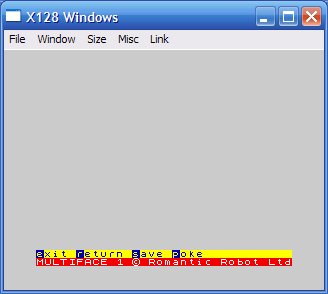
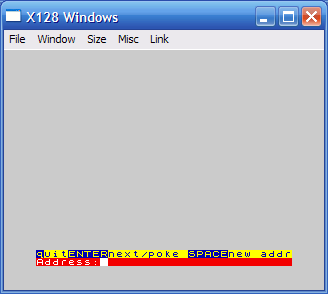
27/09/2012.
Here are some screenshots....
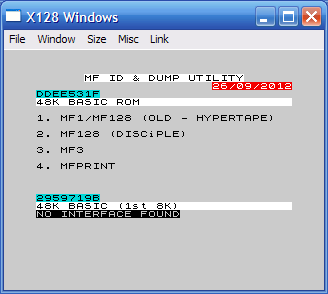
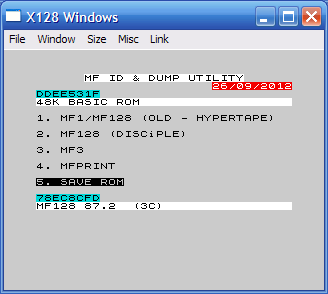
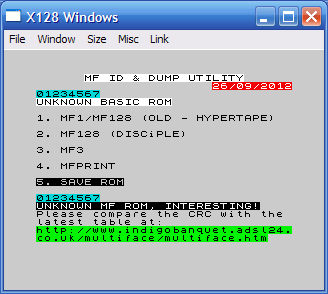
26/09/2012.
I have found the time to update the dumping tool to something useful! It now calculates CRC-32s of Multiface ROMs and compares them with a list of known ones, allowing you to find if you have an undumped ROM with more certainty than just comparing the secret number. Also, it compares with a list of known BASIC ROMs to try and tell if it managed to page in any interface at all.
Multiface ID & Dumping utility.
18/08/2012.
Added the details of the Hard Micro clone of the MF3, as listed on hardware.speccy.org.
22/07/2012.
An update - jroberto provided a dump of a Brazilian clone of the MF1, with secret numbers 93, 00. A thorough disassembly hasn't been done, but it does seem to support the same set of saving devices and the toolkit is the same. The binary is substantially different though.
02/07/2012.
Welcome to the first post of what will (hopefully) be a successful attempt to find the various versions of the Multiface and Multiprint interfaces made by Romantic Robot for the Spectrum.
Anyone can help contribute. First of all, press the red button and look at the version number (the MF1 doesn't list one though). Secondly, press Symbol Shift + A (which is STOP) and note the one or two numbers that are shown. If the numbers don't match any in the list, then you may have a previously unknown version! A future utility will follow to allow you to see the CRC32 (which confirms the uniqueness of the ROM) and extract the 8K ROM easily.
The first number is a checksum of the 8K ROM. The second number (available on the MF1 only) is the result of a read from the built-in joystick port. On the one real-life example, so far, this is zero (with the joystick not inserted/touched). When the joystick port has been disabled to allow the MF1 to work with the Betadisk interface, the number returns $FF. However, it may be possible that some MF1s will have a different value, depending on the hardware of the interface.
Which distinctive versions are currently lost to the world?
Early adverts for the MF1 say it only had 2K of RAM and a composite video out socket instead of an enable/disable switch. According to old magazine reviews, the earlier versions had a more limited toolkit which couldn't display the registers or hex digits (I have a version which has no toolkit at all!). Also, a later version of the MF1 was available which supported the Kempston Disc interface, but you had to ask for it specifically. As a consequence, it must be quite a bit rarer than the normal version. Finally, a screenshot of a MF3 v3.9 has been seen, but the ROM is not available.
Why are there two different sets of ports used for the MF128?
The original set clashed with the DISCiPLE disk interface's ports.
Why can't I load in my old "Hypertape" cassettes?
You must have the MF128 (older model) inserted and activated in order to load a "Hypertape" recording. However, it appears that the ROM version is also important, so you should try and use the same version to load it as it was saved with.
How can I calculate the CRC32?
The easiest way is to use the Multiface ID & Dumping utility. Otherwise, copy the file to the PC then zip it up and view the zip in something like WinZip or WinRAR or whatever the equivalent is for Mac or Linux setups.
How do I copy the ROM to the PC/Mac/Linux box?
While there are various modern Spectrum interfaces that allow access to CF/SD cards, etc, and ways of using floppy disks, I will mention the simplest scenario: save the file to tape (or connect the MIC socket of your 48/128 to the microphone input of your PC/Mac and try and record a WAV file directly without having to use a tape. This may take some practice with volume levels and so on, so I recommend you practice it with a smaller file first. A +2A (a black +2) or +3 can save to tape using an external tape deck, so you can connect one of the outputs of your cassette lead (if you have one) to your soundcard input, but a normal +2 (grey) cannot.
(C) Jane McKay, 2017